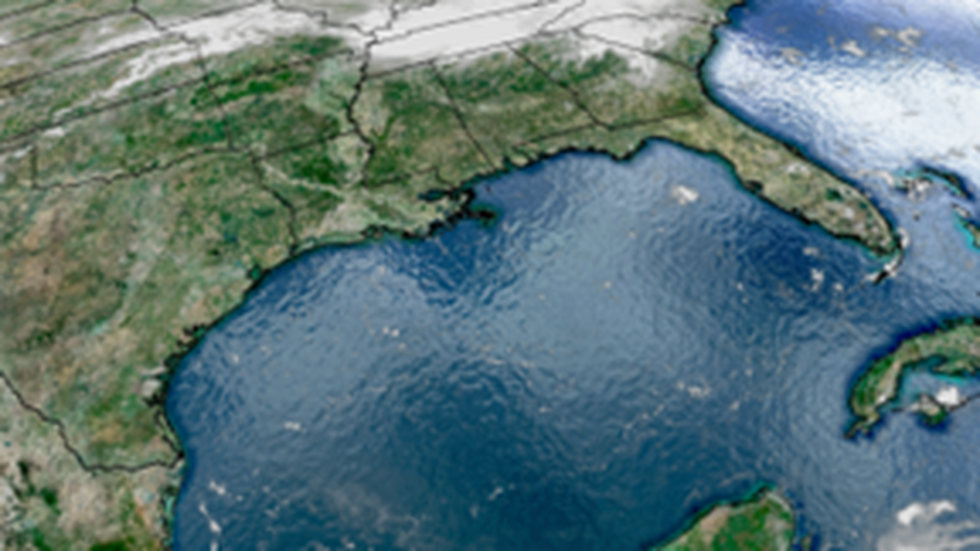
About the Gulf of Mexico:
- It is a marginal sea of the Atlantic Ocean and the world’s largest gulf.
- It is surrounded to the West by the Mexican Yucatan and Veracruz regions, to the North by the United States, to the East by the Caribbean islands and Cuba, and to the South by the tapering Mexican mainland.
- It is connected to the Caribbean Sea via the Yucatán Channel (between Cuba and Mexico) and to the Atlantic Ocean through the Straits of Florida (between Cuba and the US).
- Covering over 1.6 million square kilometres, it is one of the oldest water bodies on Earth. It was formed in the late Triassic period, around 300 million years ago.
- It is somewhat shallow, along the coastal continental shelf areas and has an average depth of 1,615m.
- The climate of the region varies from tropical to subtropical.
- Currents:
- The Gulf Stream is one of the most powerful and warm ocean currents that enters the Gulf of Mexico from the Caribbean Sea and flows out to the Atlantic.
- Some portions of the loop current often break away; forming gyres or eddies, which further affect the regional current patterns.
- The Mississippi and the Rio Grande are the major rivers draining into the gulf.
- Its major ports are Veracruz in Mexico and Galveston, New Orleans, Pensacola, and Tampa in the U.S.
2. Foreign Exchange Management Act (FEMA)

About the Foreign Exchange Management Act (FEMA):
- FEMA came in 1999 as a successor to the Foreign Exchange Regulation Act, or FERA, of 1973, with changing economic conditions in a post-liberalisation India.
- The main objective of FEMA is to facilitate external trade and payments and promote the orderly development and maintenance of the foreign exchange market in India.
- FEMA deals with provisions relating to procedures, formalities, dealings, etc. of foreign exchange transactions in India.
- The FEMA regulates various aspects of foreign exchange transactions, including the acquisition and holding of foreign exchange, the payment and settlement of foreign exchange transactions, the export and import of currency, and other related activities.
- The act also empowers the RBI to make rules and regulations to carry out the provisions of the act.
- Violations of the provisions of FEMA can result in penalties and fines.
- FEMA's head office is known as the Enforcement Directorate and is situated in Delhi.
- Applicability:
- It is applicable to the whole of India and equally applicable to the agencies and offices located outside India (which are owned or managed by an Indian Citizen).
- FEMA is applicable to the following entities and transactions:
- Foreign exchange.
- Foreign security.
- Exportation of any commodity and/or service from India to a country outside India.
- Importation of any commodity and/or service from outside India.
- Securities as defined under the Public Debt Act 1994.
- Purchase, sale, and exchange of any kind (i.e. Transfer).
- Banking, financial, and insurance
- Any overseas company owned by an NRI (Non-Resident Indian) and the owner is 60% or more.
- Any citizen of India, residing in the country or outside (NRI).
Who are Authorised Persons (APs) under FEMA?
- Section 2(c) of the FEMA states that ‘authorised person’ means an authorised dealer, money changer, off-shore banking unit, or any other person authorised under section 10 (1) to deal in foreign exchange and foreign securities.
- These are authorised by the RBI to deal in foreign exchange or in foreign securities.
3. National Legal Services Authority (NALSA)

About the National Legal Service Authority (NALSA):
- NALSA has been constituted under the Legal Services Authorities Act, 1987, to provide free legal services to the weaker sections of society and to organise Lok Adalats for amicable settlement of disputes.
- The prime objective of NALSA is the speedy disposal of cases and reducing the burden on the judiciary.
- The Chief Justice of India is the patron-in-chief of NALSA, while the second senior most judge of the Supreme Court of India is the Executive Chairman.
- It is housed at the Supreme Court of India, New Delhi.
- In every State, a State Legal Services Authority and in every High Court, a High Court Legal Services Committee has been constituted.
- District Legal Services Authorities and Taluk Legal Services Committees have been constituted in the Districts and most of the Taluks to give effect to the policies and directions of the NALSA, and to provide free legal services to the people, and conduct Lok Adalats in the State.
- NALSA, through the State Legal Services Authorities, also conducts legal literacy programmes.
- The free legal services include:
- Payment of court fees, process fees, and all other charges payable or incurred in connection with any legal proceedings;
- Providing the service of lawyers in legal proceedings;
- Obtaining and supply of certified copies of orders and other documents in legal proceedings.
- Preparation of appeal, paper book, including printing and translation of documents in legal proceedings.
- Persons eligible for free legal services includes:
- Women and children
- Members of SC/ST
- Industrial workmen
- Victims of mass disasters, violence, flood, drought, earthquake, and industrial disaster.
- Disabled
- Persons in custody
- Persons whose annual income does not exceed Rs. 1 lakh (in the Supreme Court Legal Services Committee the limit is Rs. 5,00,000).
- Victims of trafficking in human beings or beggars.
- Constitutional Provisions:
- Article 39A provides for free legal aid to the poor and weaker sections of society and ensures justice for all.
- Articles 14 and 22(1) of the Constitution also make it obligatory for the State to ensure equality before the law and a legal system that promotes justice on the basis of equal opportunity for all.
4. Eurasian Otter
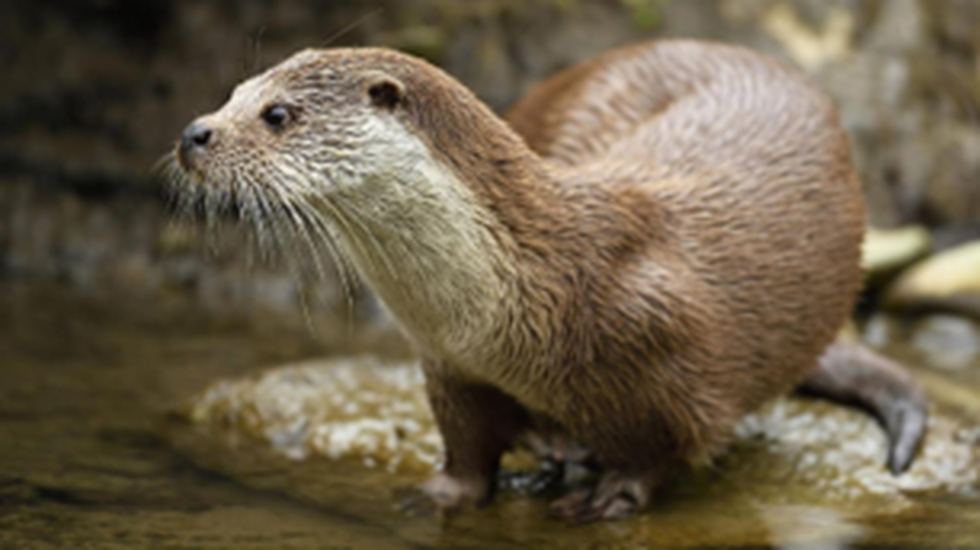
About Eurasian Otter:
- It is a semi-aquatic carnivorous mammal native to Eurasia.
- Scientific Name: Lutra lutra
- Distribution:
- It has one of the widest distributions of all Palearctic mammals, from Ireland to China and down to Southeast Asia.
- It lives throughout Europe, North Africa, and Asia.
- In India, it occurs in northern, northeastern, and southern India.
- Habitat:
- It inhabits streams, rivers, lakes, freshwater and peat swamp forests, ocean shores, rice fields, fjords, caves, and other terrestrial habitats close by waterways.
- In the Indian subcontinent, it is found in cold hills and mountain streams.
- Conservation Status:
- IUCN: Near threatened
- Wildlife Protection Act, 1972: Schedule II
- CITES: Appendix I
Key Facts about Chinnar Wildlife Sanctuary (CWS):
- Location:
- It is located in Idukki District, Kerala.
- It lies in the rain shadow region of the Western Ghats and receives very less rainfall every year.
- The south side of the sanctuary is covered by Eravikulam National park, and the north side is by Indira Gandhi Wildlife Sanctuary.
- Vegetation:
- It has a wide array of habitat types, like deciduous forests, dry thorn scrub, riparian forest, shoals, and grasslands.
- There is an extensive sandalwood forest nearby the sanctuary.
- Flora:
- Chinnar has about 1000 species of flowering plants and a wide variety of medicinal plants.
- The major species of flora include Acacia arabica, Acacia leucofolia, Acacia concinna, antallum album, Anogeissus latifolia, Rhododendron nilagiricum, Elaeocarpus, etc.
- Fauna:
- It is home to the endangered Great Grizzled Squirrel of India.
- Other important mammals that you can see here are the elephant, tiger, leopard, guar, sambar, spotted deer, Nilgiri Tahr, etc.
5. Tansen Samaroh

About the Tansen Samaroh:
- Tansen Samaroh is a tribute to Indian musical legend, Shri Ramtanu Misra, famously known as Tansen.
- It is held every year in December in Gwalior to celebrate Tansen.
- Artists and music lovers from all over the world gather here to pay tribute to the Great Indian Musical Maestro Tansen.
Key facts about Mian Tansen:
- He was a prominent Indian classical music composer, musician and vocalist, known for a large number of compositions, and also an instrumentalist who popularised and improved the plucked rabab (of Central Asian origin).
- He was among the Navaratnas (nine jewels) at the court of the Mughal Emperor Jalal ud-din Akbar.
- Akbar gave him the title Mian, an honorific, meaning learned man.
- Tansen as a historical personality is difficult to extract from the extensive legend that surrounds him.
- He is given credit for introducing some famous ragas, Miyan ki Malhar, Miyan ki Todi and Darbari
6. Smart Lander for Investigating Moon (SLIM) Mission
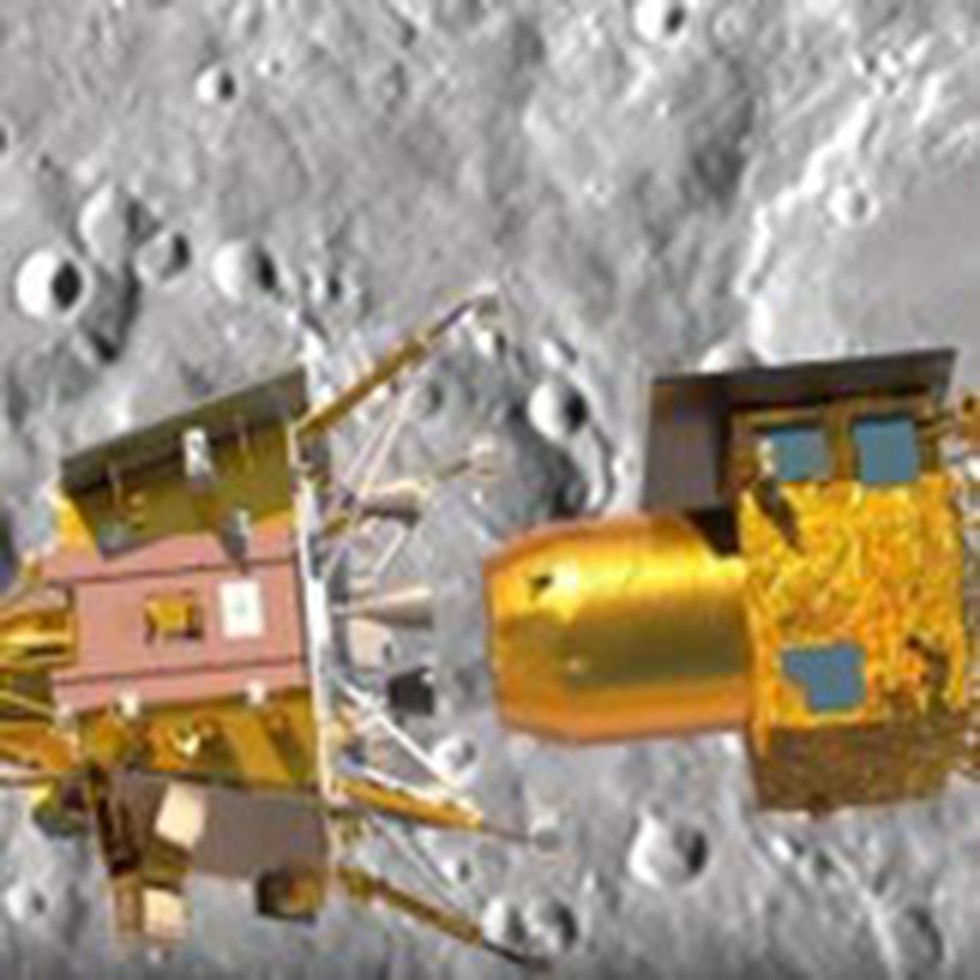
About Smart Lander for Investigating Moon (SLIM) Mission:
- It is a spacecraft built and launched by the Japan Aerospace Exploration Agency (JAXA) on September 7, 2023, from the Tanegashima spaceport.
- It weighed only 590 kg.
- It was launched together with XRISM, a next-generation X-ray space telescope, onboard an H-2A rocket.
- It entered into an elliptical orbit around the moon over three minutes or so.
- Its apogee (farthest point) in this orbit is 4,000 km and perigee (closest point) is 600 km above the lunar surface.
What will SLIM do on the moon?
- Just before it lands, SLIM will deploy two small rovers called Lunar Excursion Vehicle (LEV) 1 and 2. LEV-1, LEV-2, and SLIM will together study the lunar surface near the landing point, collect temperature and radiation readings, and attempt to study the moon’s mantle.
Key points about XRISM Mission:
- The X-Ray Imaging and Spectroscopy Mission (XRISM) is a joint mission of the Japan Aerospace Exploration Agency (JAXA) and the National Aeronautics and Space Administration (NASA), involving contributions from the European Space Agency (ESA).
- Objective: The mission aims to observe X-rays coming from deep space and to identify their wavelengths with unprecedented precision.
- It will use state-of-the-art spectroscopy to measure changes in the brightness of celestial objects at different wavelengths.
- It detects X-rays with energies ranging from 400 to 12,000 electron volts. (For comparison, the energy of visible light is 2 to 3 electron volts.)
- This range will provide astrophysicists with new information about some of the universe's hottest regions, largest structures, and objects with the strongest gravity.
7. Non-invasive formaldehyde sensor

About Non-invasive formaldehyde sensor:
- Materials used: Tin oxide-reduced graphene oxide composite (rGO- SnO2).
- While reduced graphene oxide (rGO) has been used to detect various toxic gases and VOCs, Tin Oxide (SnO2) has been extensively investigated for formaldehyde detection in pristine form and by incorporating it with various compounds, including graphene, due to its high stability and high sensitivity toward low concentrations of formaldehyde.
- Process: The Graphene oxide (GO) was processed through wet chemical approach and tin oxide-reduced graphene oxide composite (rGO- SnO2) was synthesised by hydrothermal route followed by calcination of the obtained product.
- They found that the sensor made of tin oxide decorated with reduced graphene oxide effectively sensed formaldehyde vapour at room temperature.
- The sensor shows long-term stability with a low detection limit.
- A new low-cost sensor made of metal oxide nanoparticles reduced graphene oxide composite can detect formalin adulteration in fishes at room temperature in a non-invasive way.
- The research for this is supported by DST-PURSE (Promotion of University Research and Scientific Excellence).
- Existing sensors:
- Commercial formalin sensors for fish are primarily electrochemical-based or colorimetric-based. Electrochemical sensors are extensively used but are expensive.
- The calorimetric sensors are less expensive. But both methods are invasive in nature.
- Issue: Low-level detection and selective detection are two major issues with these sensors.
- Significance of new sensor:
- The development of 2D materials-based gas sensors has created a new avenue of effective detection of toxic vapours at room temperature.
- These sensors have the potential to detect the formalin evaporated from adulterated food products.
8. What is Formaldehyde?
- It is a colourless, pungent gas that is used in a variety of industrial processes, including as a preservative in some foods, commonly in fish in developing countries.
8. Huntington’s disease
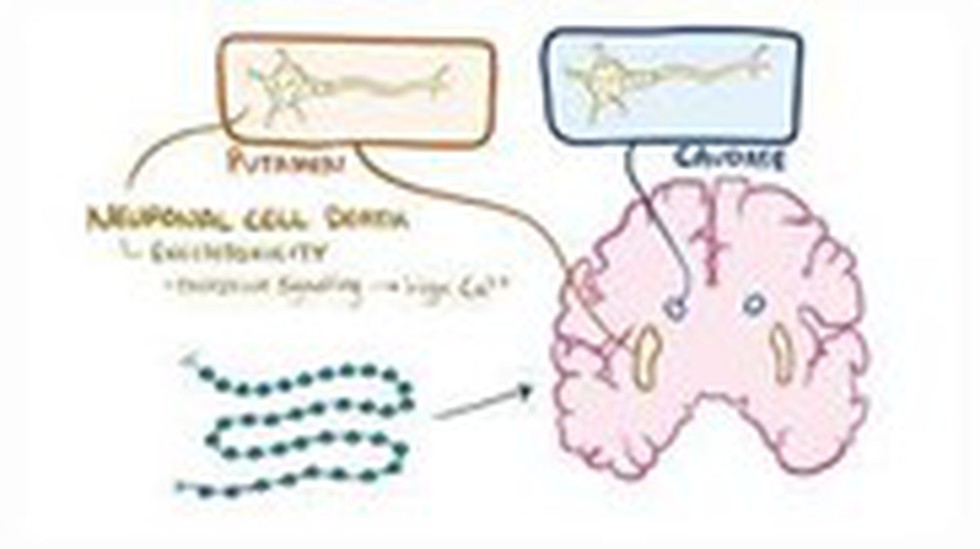
About the Huntington’s disease:
- It is a rare, inherited disease that causes the progressive breakdown (degeneration) of nerve cells in the brain.
- It has a wide impact on a person's functional abilities and usually results in movement, thinking (cognitive) and psychiatric disorders.
- There are two types of Huntington’s disease:
- Adult onset: This is the most common form. Symptoms usually begin after age 30.
- Early onset (juvenile Huntington’s disease): Early onset affects children and teenagers. It’s very rare. When Huntington's develops early, symptoms are somewhat different and the disease may progress faster.
- Cause:
- A genetic change (mutation) of the HTT gene causes Huntington’s disease. The HTT gene makes a protein called huntingtin. This protein helps your nerve cells (neurons) function.
- The normal HTT gene contains a stretch of DNA that specifies the number of times the amino acid glutamine is repeated in the HTT This number varies from 11 to 31.
- In the mutant versions of the HTT gene, this stretch is expanded to encode 35 or more repeats.
- As the number of repetitions increase, the severity of Huntington’s disease increases and its debilitation begins at an earlier age.
- Symptoms
- Huntington's disease usually causes movement, cognitive and psychiatric disorders with a wide spectrum of signs and symptoms.
- The patient suffers mood swings, has difficulty in reasoning, shows abnormal and uncontrollable jerky movements, and experiences difficulty in speaking, swallowing, and walking.
- Treatment: Medications are available to help manage the symptoms of Huntington's disease. But treatments can't prevent the physical, mental and behavioural decline associated with the condition.
9. Aardvarks
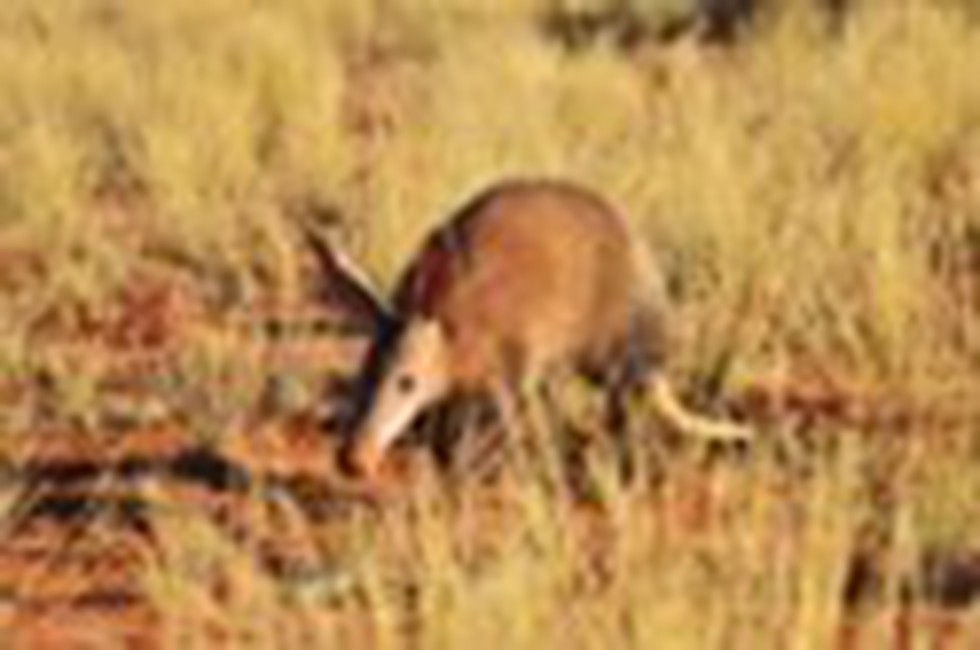
About the Aardvarks:
- It gets its name from a South African word meaning “earth pig.”
- They look like a pig, especially with its body and snout. But they actually share common ancestors with elephants and golden moles.
- They are nocturnal mammals, most active at night and tend to live alone. During the day, they sleep curled up in a ball in their burrows.
- This species has been assessed as having the highest score for evolutionary distinctiveness. This is because it does not have many close relatives and has been evolving independently for millions of years.
- The Aardvark is the sole surviving species of its order, Tubulidentata, and its closest relatives have been extinct since the Pleistocene era (2 million years ago).
- Diet: The aardvark’s diet consists almost entirely of ants and termites.
- Habitat: Aardvarks are found over much of the southern two-thirds of Africa and their habitat is savannah and semi-arid areas.
- Ecosystem Roles: Aardvarks are important in their ecosystem because the holes they dig are used by a variety of other animals for shelter.
- Conservation Status
- IUCN: Least Concern
- The recent study concluded that the genetic structure of aardvarks is strongly shaped by climate, with arid areas limiting gene flow and reflected apparent isolation by adaptation associated with temperature.


























































































































































.png)
.png)
.png)
.png)
.png)


.png)
.png)
.png)





.png)
.png)






.png)
.png)
.png)
.png)
.png)
.png)
.png)
.png)
.png)

.png)







.png)
.png)


.png)
.png)
.png)


.png)

.png)
.png)





.jpg)

.png)
.png)


.png)

.png)
.png)
.png)

.jpg)

.jpg)


.png)

.png)
.png)
.png)
.png)
.png)
.png)
.png)
.png)
.png)
.png)




.png)

.png)





.png)
.png)
.png)
.png)
.png)
.png)
.png)
.png)
.png)
.png)
.jpg)
.jpg)

.png)
.png)
.png)
.png)
.png)
.png)
.png)
.png)
.png)
.png)
.png)
.png)
.png)
.png)
.png)
.png)
.png)
.png)
.png)
.png)
.png)
.png)



.png)
.png)

.jpg)
.jpg)


.jpg)
.jpg)
.jpg)
.jpg)
.jpg)

.jpg)








.jpg)
.jpg)
.jpg)
.jpg)
.jpg)

















.jpg)
.jpg)







.jpg)


















.jpg)
.jpg)






























































































.jpg)
.jpg)


























.jpg)

.jpg)










.jpg)








.jpg)




.jpg)










.jpg)


















.jpg)












































.jpg)














.jpg)
.jpg)
.jpg)





.jpg)

.jpg)
.jpg)





































































.jpg)


































.jpg)
.jpg)
















































.jpg)












.jpg)


.jpg)




.jpg)
.jpg)
.jpg)

.jpg)
.jpg)
.jpg)
.jpg)

.jpg)
.jpg)
.jpg)

.jpg)
.jpg)
.jpg)
.jpg)
.jpg)
.jpg)
.jpg)
.jpg)

.jpg)


.jpg)
.jpg)
.jpg)
.jpg)
.jpg)
.jpg)
.jpg)
.jpg)
.jpg)
.jpg)











.jpg)
.jpg)





.jpg)
.jpg)
.jpg)
























.jpg)
























.jpg)









.jpg)
.jpg)







.jpg)
.jpg)









































.jpg)
.jpg)
.jpg)
.jpg)
.jpg)

.jpg)
.jpg)
.jpg)
.jpg)
.jpg)


.jpg)
.jpg)
.jpg)
.jpg)
.jpg)

.jpg)
.jpg)
.jpg)
.jpg)
.jpg)
.jpg)
.jpg)
.jpg)
.jpg)
.jpg)
.png)

.png)
.png)

.png)
.png)
.png)
.png)


.jpg)
.jpg)

.jpg)
.jpg)
.jpg)

.png)
.png)
.png)
.png)
.png)
.png)
.png)

.png)
.png)
.png)
.png)
.png)
.png)
.png)
.png)
.png)
.png)





































































-min.png)



.png)




.png)








































